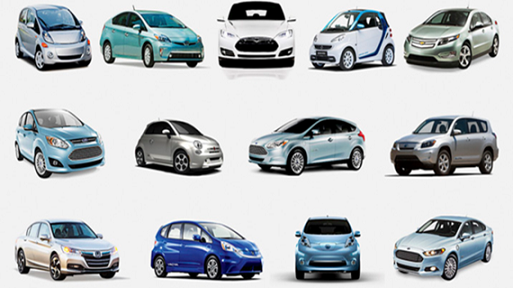On May 5th the Connecticut Governor's Council on Climate Change (GC3) hosted listening sessions about how to best to help avoid the worst impacts of climate disruption. Hundreds of Sierra Club volunteers submitted written testimony and dozens attended the meetings in person laying out the best way to move forward: a combination of reduced energy consumption (through increased energy efficiency in vehicles and buildings), expanded availability of clean electricity, and electrification of the transportation and heating sectors.
This transition is necessary for the health of our climate. As a recent Mother Jones article states, “the hope of the planet could lie in a force—electricity—we've known about for hundreds of years.” The Governor's Council on Climate Change’s own data echoes this; we need to move to 100% clean energy, electrify our vehicles, and transform how we heat our homes and businesses to reduce the impacts of climate disruption. The only viable path to deep reductions in greenhouse gas emissions is through a combination of reduced energy consumption (through increased energy efficiency in vehicles and buildings), expanded availability of clean electricity, and electrification of the transportation and heating sectors.
Motor vehicles are the largest source of climate and health-damaging air pollution that adversely affects the health and well-being of Connecticut residents. As their name implies, electric and zero-emission vehicles, which require no gasoline and emit no tailpipe pollution, present a critical opportunity to slash dangerous pollution, reduce oil dependence, and forever change the impact of transportation on our health and planet. Because of this, electric vehicles need to be a central focus of the GC3.
The United States and China lead the world in the number of electric vehicles (EVs) on the road, but the count is still incredibly small: fewer than 450,000, or less than 1 percent of monthly auto sales. Research suggests that number will climb steadily over the next several decades, especially with Tesla’s recent record-breaking online pre-sales of its Model 3, showing the increasing popularity of electric vehicles. With the increasing number of EV models on the road, shopping for an EV is now similar to shopping for cars with traditional combustion engines. Different ranges and car types abound. Electric sports cars, SUVs, affordable sedans, and even 18-wheeler trucks are now available from Chevrolet, Nissan, BMW, Tesla and many other automakers. About 30 plug-in hybrids and full battery electric vehicles are currently on the market.
Thanks to the incredible growth of solar, wind, and other renewable energy technologies, electricity is getting even cleaner over time. Over the last decade, the share of total U.S. electricity production from renewables rose from about 9.5 percent to more than 14 percent, with year-to-year growth getting faster all the time. With that progress, vehicles fueled by electricity are significantly lower polluting than using gasoline, particularly in the Northeast. And the more wind and solar we deploy, the cleaner the electricity we will use to fuel our vehicles and heat our homes and businesses becomes.
This switch to electric vehicles isn’t only necessary for our climate but necessary for Connecticut’s economy as well. A recent analysis from Synapse Energy Economics shows that taking the steps to increase energy efficiency, deploy more wind and solar power, and electrify the transportation sector will save us billions of dollars and create tens of thousands of new jobs. In fact, the state’s commitment to the Regional Greenhouse Gas Initiative (RGGI) has helped cut carbon pollution by more than 35 percent across the northeast, while electricity prices have declined by five percent in Connecticut. What’s more, the program has helped spur more than $245 million in revenues and clean energy investments while creating almost 2,200 jobs.
To act on climate, we need to transition to clean electricity powering cars and homes. According to Jim Williams, a key author of a detailed technical study that describes how we can transition away from problematic carbon-based fuels, "even if we continue to live like we're living, we have the technology, we have what it takes to quit emitting so much CO2 to the atmosphere." Our gas stoves will be swapped for electric stoves and our cars will be fueled at home or at charging stations instead of gas stations. For the health of Connecticut citizens, the Connecticut Governor's Council on Climate Change should do all it can to speed this transition along. Sierra Club volunteers have called on the Council to act. We hope they’ll listen because, with infrastructure investments and consumer incentives, electric vehicles can not only cut carbon but become a critical economic driver for our 21st-century economy.
